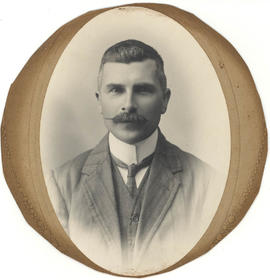Bulley, Arthur Kilpin (1861-1942)
- BUL
- Person
- 1861-1942
Born Cheshire 1861; died Cheshire 1942
Arthur Bulley was the thirteenth of fourteen children of a wealthy Liverpool cotton broker and on leaving school joined the family business. As a young man he had a love of wild plants and in 1897 bought 24 hectares of farmland at Ness near Neston on the Wirral to build a new family home and create a garden. In 1896 he had started a correspondence with Professor Isaac Bayley Balfour, Regius Keeper at the Royal Botanic Garden Edinburgh (RBGE) who was to become his mentor and lifelong friend. In 1904 Bulley started a commercial nursery at Ness which, a few years later, became Bee’s Ltd., and the search for new seeds and plants was on. In that year Bayley Balfour recommended George Forrest as a collector to send to North West Yunnan, a joint enterprise with the RBGE, with Bulley providing the finance. This was the beginning of a series of sponsorships of professional plant collectors including Frank Kingdon Ward and Roland Edgar Cooper, again recommended by Bayley Balfour, who made several trips to China and the Himalayas to provide stocks for Bee’s Nursery. The Nursery, which moved to Sealands near Chester in 1911, was a thriving business which sold not only rare shrubs and alpine plants including primula and meconopsis but supplied ‘penny packets’ of seeds to Woolworths for over 50 years. Bulley retired from the family cotton firm in 1922 but continued sponsoring plant collecting expeditions all over the world, usually as part of a syndicate, and also subscribed to the first Everest expedition. Arthur Bulley was a keen Socialist, shrewd businessman, eccentric and visionary. Primula bulleyana was named after him and after his death his daughter bequeathed Ness Gardens to the University of Liverpool.
Sources: R. Desmond ‘Dictionary of British and Irish Botanists and Horticulturalists’; Brenda McLean ‘A Pioneering Plantsman’
D.W.

